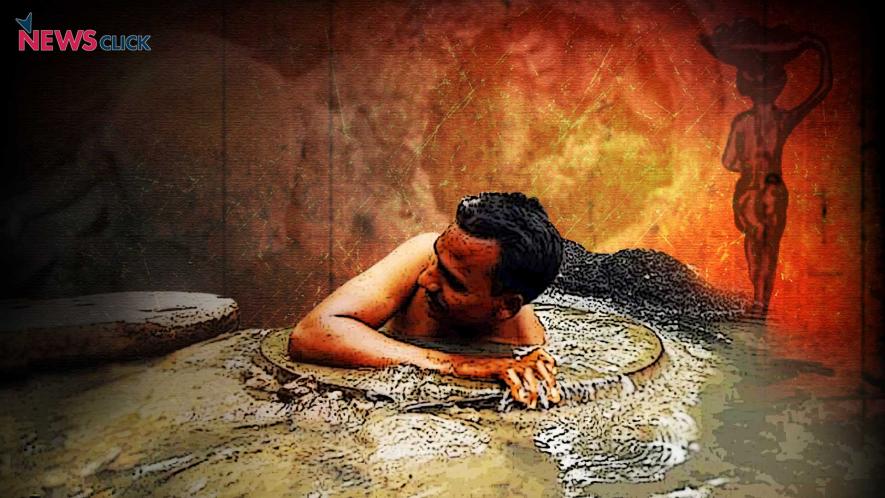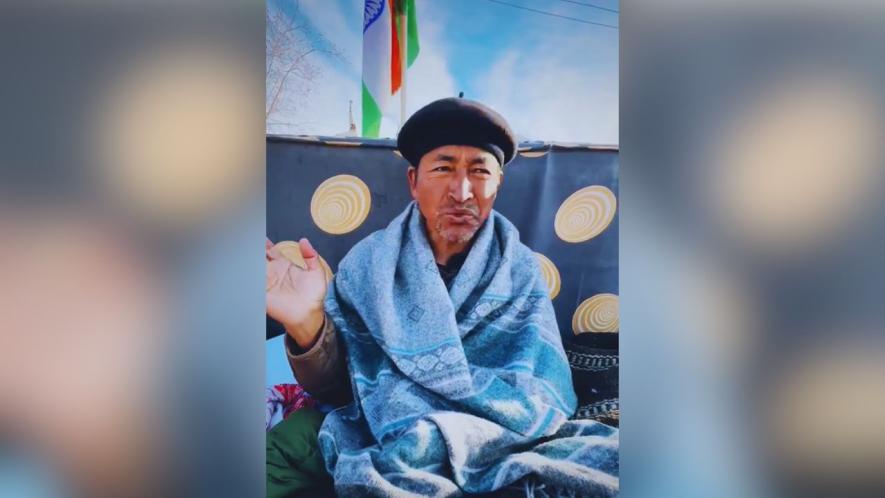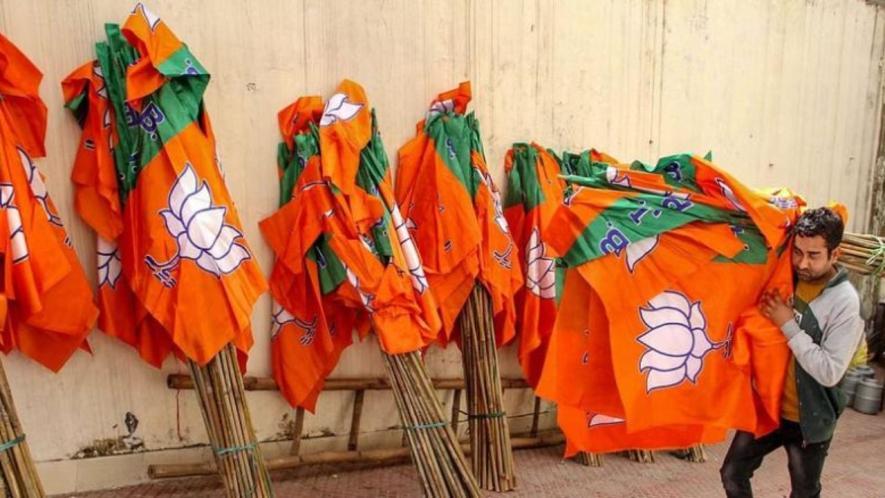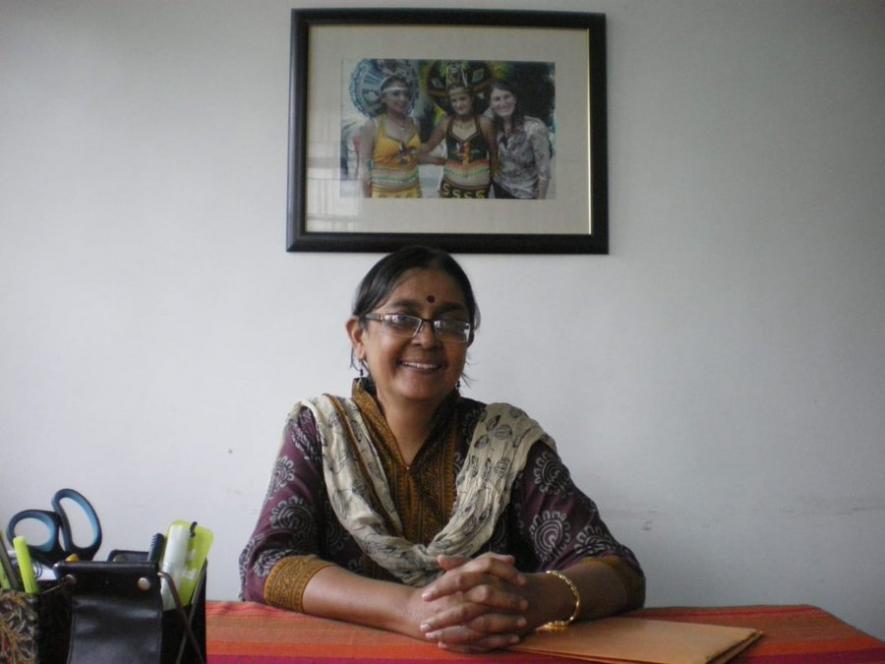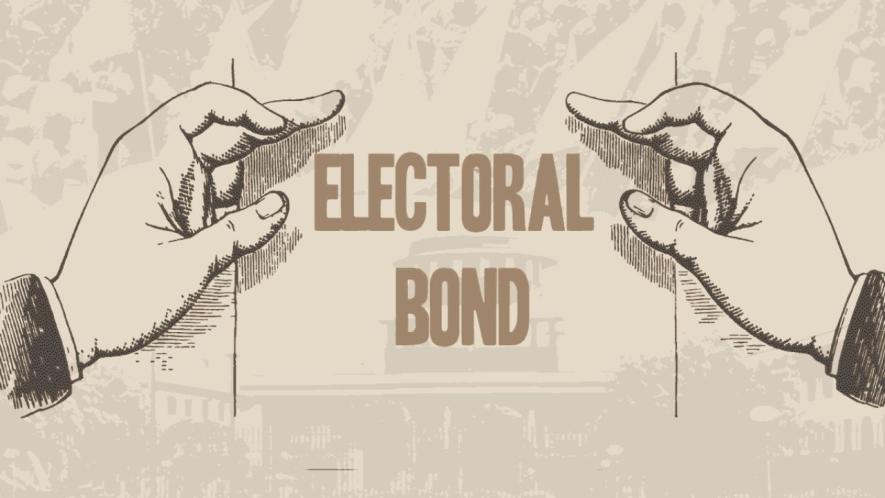Indian Women Have Gone Backward Under Narendra Modi’s Rule
On taking power, Narendra Modi’s government claimed that it would address a wave of sexual violence and raise the status of Indian women. But things have got worse for women under Modi’s rule, with a culture of misogyny that flows downward from the top.
By Maya John

The Bharatiya Janata Party (BJP), which currently heads the ruling coalition government in India, has long had a reputation as a male-dominated, Hindu supremacist organization with an upper caste and patriarchal image. Prime Minister Narendra Modi has promoted a makeover of the party’s image on several fronts. He is now seeking a third term in office and campaigning aggressively on the government’s numerous initiatives related to women.
The BJP is specifically targeting women as a separate vote bank, inspired by the higher turnout of female voters in recent elections. The emergence of women as an identifiable constituency makes it imperative to take stock of the BJP’s claims to have “empowered” women during its decade-long rule.
Violence Against Women
When the BJP-led electoral alliance came to power, there was palpable discontent about growing crimes against women. People desired changes in the legal framework, especially with respect to crimes of sexual violence. An appeal to this widespread sentiment became one of the important planks on which Modi based his 2014 election campaign.
However, since Modi’s party has been in power, the country has witnessed a further spurt in violence against women. The 2021 data of the National Crime Records Bureau reveals that on average, eighty-six women were raped every day in India, while forty-nine cases of crimes against women were lodged every single hour. The overall number of crimes against women per one hundred thousand of the population increased from 56.3 in 2014 to 66.4 in 2022.
Growing violence against women reflects not only a deep patriarchal bias but also an utter institutional failure. At times, we have seen the BJP defending and protecting those accused of violence against women. For example, the union minister of women and child development, Smriti Irani, shamefully lashed out at victims who publicly expose their perpetrators, accusing them of “defaming” the government.
Clearly, the culture of impunity has become more entrenched, particularly among those enjoying proximity to the ruling elites and belonging to dominant castes and communities or other positions of influence in society. The last decade of Modi’s rule has seen numerous disturbing instances of sexual violence, many of which involved women from marginalized communities and economically vulnerable backgrounds.
Several of these cases found their way into the mainstream news, such as the gang rape of a minor girl by a BJP legislator in Unnao, Uttar Pradesh, in 2017; the repeated gang rape and murder of an eight-year-old Muslim girl in Kathua, Kashmir, in 2018; and the gang rape of a Dalit girl in Hathras, Uttar Pradesh, in 2020. Compromised police investigations, criminal negligence, and covert institutional backing for the perpetrators have been apparent.
From the release of the rapists of Bilkis Bano, a victim of gang rape during the 2002 Gujarat communal carnage, to the eerie silence of Modi amid the horrifying violence and rampant sexual assaults on women in Manipur during the recent clashes between Meitei and Kuki-Zo communities, the BJP’s approach to the violence unleashed on women during communal pogroms and ethnic clashes is even more revealing of its misogyny.
Impunity at the Top
We can expect little else from a ruling party that has the highest number of sitting members of parliament (MPs) and members of legislative assemblies (MLAs) against whom cases of crimes against women have been registered.
Naked displays of impunity by BJP politicians and legislators have often surfaced over this past decade. These include the intimidation of India’s female wrestlers of international fame, who mustered the courage to expose rampant sexual harassment by Brij Bhushan Sharan Singh, a BJP MP and president of the Wrestling Federation of India (WFI).
In the course of this year’s general election, numerous disturbing videos have surfaced of mass rapes and sexual assaults by Prajwal Revanna, a sitting MP from the BJP’s key electoral ally in Karnataka. Modi has been accused of knowing about the accusations but campaigning for the sexual predator anyway, desperate for votes from Karnataka. Revanna was allowed to flee the country. The scandal is a farcical repeat of the pattern of culpability manufactured and abetted by the ruling party on several previous occasions.
Keen to save its image and absolve itself of allegations of complicity, the Modi administration has repeatedly resorted to gimmicks such as enhancing the severity of punishment. The overt focus on the quantum and severity of punishment draws attention away from the abysmally low conviction rates for rape and the fact that it is the certainty of punishment more than its severity which is the effective deterrent.
In 2021, for instance, the conviction rate for crimes against women was a mere 26.5 percent, while 95 percent of cases were still pending. Although it has introduced more stringent criminal laws, the government has done precious little to ensure greater accountability of the police, reform of the judicial system, or improved measures to rehabilitate and empower rape survivors.
In fact, the Nirbhaya Fund, which was established in 2013 after public outrage over the Delhi gang-rape case, is grossly underfunded and underutilized. In 2021, only 50 percent of the money allocated had been released, and only 29 percent had actually been spent. The consequence is a lack of sufficient fast-track courts and one-stop rape crisis centers, which actually hinders the pursuit of justice.
Communal Misogyny
The BJP’s claim to be successfully fighting gender oppression is further exposed when we factor in the impact of its divisive communal politics on women. India saw a sharp rise in honor killings over the last decade, with BJP-ruled provinces topping the chart.
This alarming trend cannot be separated from the vigilantism of right-wing mass organizations with connections to the ruling party. These organizations have been aggressively targeting interfaith consensual relationships, especially those between Hindu women and Muslim men.
Many have rightly argued that in view of its divisive agenda of targeting particular religions and communities, the Modi government has seen the Uniform Civil Code (UCC) as a way to push for uniformity across communities rather than substantive gender equality within communities.
The UCC introduced in the Uttarakhand province, for example, overlooks discrimination within the personal laws of the undivided Hindu family. Instead, it curbs the right of women to cohabit with partners of their choice, thereby paving the way for moral policing by state institutions and vigilante groups.
Modi’s divisive, partisan form of politics also came to the fore in 2022 when hijab-wearing Muslim women students were denied access to state pre-university colleges in Karnataka, which was then ruled by the BJP. This hampered the educational opportunities of young women who come from a minority community that is already battling educational disadvantage.
Importantly, it is not only minority Muslims whose access to education has taken a hit. The BJP’s education policy has intensified the neglect of publicly funded schooling across the board, paving the way for the merger of government schools in a supposed bid to “rationalize” resources.
Such measures, leading to the closure of several schools, have adversely affected the education of girls, especially in rural areas. This has triggered protests by school-going girls and their parents.
Hollow Claims
Another example of hollow claims about uplifting and bringing dignity to India’s rural women concerns the much-advertised social empowerment scheme aimed at eliminating open defecation. Far from being a novel initiative, this is simply a repackaged version of an earlier rural sanitation program, now referred to as Swachh Bharat Abhiyan (SBA).
Although SBA provides monetary support for the construction of toilets in rural households, the scheme comes without the laying of a proper sewer system and maintenance. As a consequence, it reinforces the vile and primitive practices of manual scavenging. The double tragedy is that such stigmatized work is carried out mostly by Dalit (“untouchable”) women in villages.
In real terms, the Modi era has spelled doom for the large majority of women from the working and lower-middle classes as well as poor peasants and impoverished tribal households. The burden of social reproduction borne by these women has greatly increased with the rapid privatization of many public utilities and the steady withdrawal of the state from health care and education.
While the government showcases a plethora of welfare schemes, the actual cash transfers amount to paltry sums. This is especially true in a context where inflation persists unabated and budgetary allocations for such schemes are being steadily curtailed.
Modi’s administration claims to have distributed over ninety-five million deposit-free liquified petroleum gas (LPG), or clean fuel, connections to poor rural households between 2016 and 2023. Yet with LPG prices skyrocketing, more than half of rural women continue to collect firewood and use polluting solid fuels. In this way, the average Indian woman continues to juggle a high quantity of housework and has to spend much more time attending to these tasks.
Smoke Screen
The government’s claim to have empowered women does not stand up when measured against the realities of women’s everyday lives and their skewed access to livelihoods and gainful employment. At one level, we can see rising crimes against women and the pervasive culture of impunity that adversely affects the efforts of women to venture out, unfettered, into the public sphere.
At another level, behind the smokescreen of paid news, we can discern the fast-deteriorating conditions of women in India’s labor market. The current status of the state-backed national rural employment guarantee scheme (the Mahatma Gandhi National Rural Employment Guarantee Act, or MNREGA) is alarming to say the least. Notably, women constitute over 50 percent of the MNREGA workforce.
Intensifying agrarian distress and rising unemployment have resulted in increased demand for MNREGA work. However, the Modi government’s budget cuts for MNREGA have led to a shortage of work under the scheme, along with massive delays in payments.
In addition, around five million women are presently employed under various schemes and programs run by Union and state governments. These women, who belong mostly to “lower” castes and come from impoverished backgrounds, are mobilized for various forms of community work, such as the delivery of primary health care in villages or taking care of children in anganwadis (rural childcare centers).
However, their work is undervalued by being cast as an extension of voluntarism and community service. As a result, they are denied the status and rights of workers and receive paltry “monthly incentives” or honorariums. This has driven many to engage in vigorous struggles for recognition as government workers. The Modi government offers no assurances for their uplift.
When boasting of its efforts to generate livelihoods for women through microfinance loan schemes like the Pradhan Mantri Mudra Yojana (PMMY), the government conveniently overlooks the fact that private capital accounts for the larger share of India’s microfinance industry. By steering clear of effective regulation of mushrooming microfinance institutions, the BJP has left women to increasingly bear the brunt of predatory lending and become caught in the vortex of indebtedness.
In the interest of “ease of business,” the government has introduced new labor codes that represent a further withdrawal of the state from public regulation of relations between workers and employers. The infamous codes have pushed more and more women workers into the informal sector, exposing them to precarity and vulnerability.
Heavily concentrated in the lowest rungs of the labor market, women are falling prey to dismal working conditions characterized by low wages and overwork. The insecure and informal work arrangements also breed rampant sexual harassment of laboring women.
Recognition and Redistribution
Electoral politics in India was traditionally driven by the logic that the voting choices of women were shaped by their male counterparts within the family, caste, community, and so on. However, women have been emerging as an electoral constituency in their own right. That is one reason why issues of concern to women have steadily gained more attention in recent years.
In response, the Modi government has sought to milk the long-pending issue of reserving 33 percent of seats for women in the Lok Sabha, India’s parliament. In January 2024, just before the announcement of polling dates for the general election, it strategically passed the bill on reservation for women.
The measure offers nothing substantial for the average woman and for the masses in general, since India’s skewed first-past-the-post electoral system fails to provide for more representative governments that cater to the interests and aspirations of socially and economically vulnerable sections of society.
Moreover, as a general trend, women candidates of all political parties come from affluent backgrounds. This looks likely to continue even after the reform, reinforcing the status quo whereby women from the dominant sections of society will continue to capture the parliamentary space.
It is at a time of growing pauperization of women that the increase in women’s representation in the ruling establishment has been put into effect. As a mere politics of recognition, this measure can be easily co-opted and translated into a form of patriarchal patronage — until, of course, it is reenvisioned with redistribution of resources so that the lives, liberty, and livelihoods of women are concretely secured.
Women in India have been far from passive over the past decade. They have been in the forefront of numerous movements against discriminatory citizenship laws, sexual violence, pro-corporate farm laws, dispossession, anti-labor policies, and so on, all of which have challenged the legitimacy of the ruling dispensation. We can expect such resistance to build anew and persist — Modi or no Modi.
Maya John is an assistant professor of history at Jesus and Mary College, University of Delhi.
